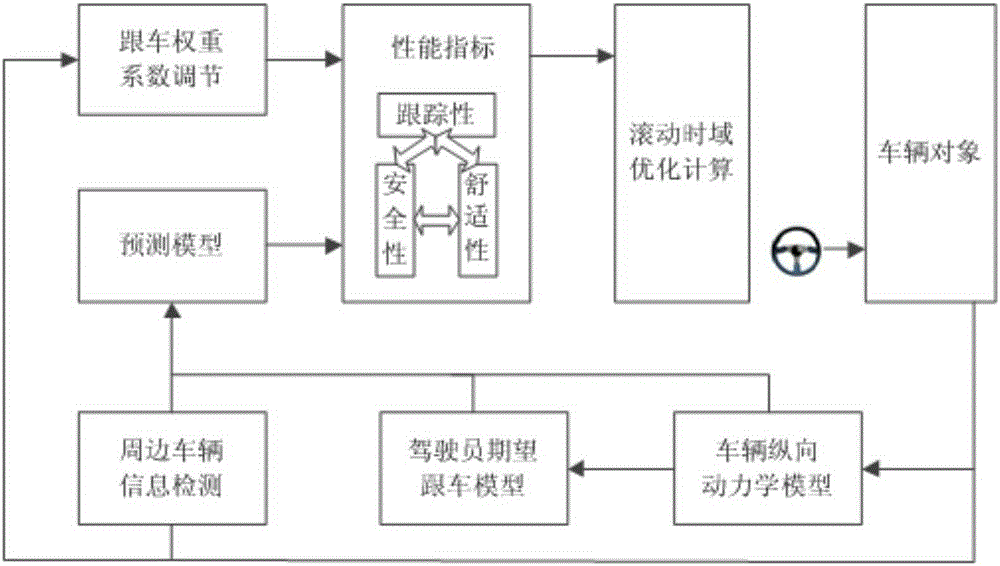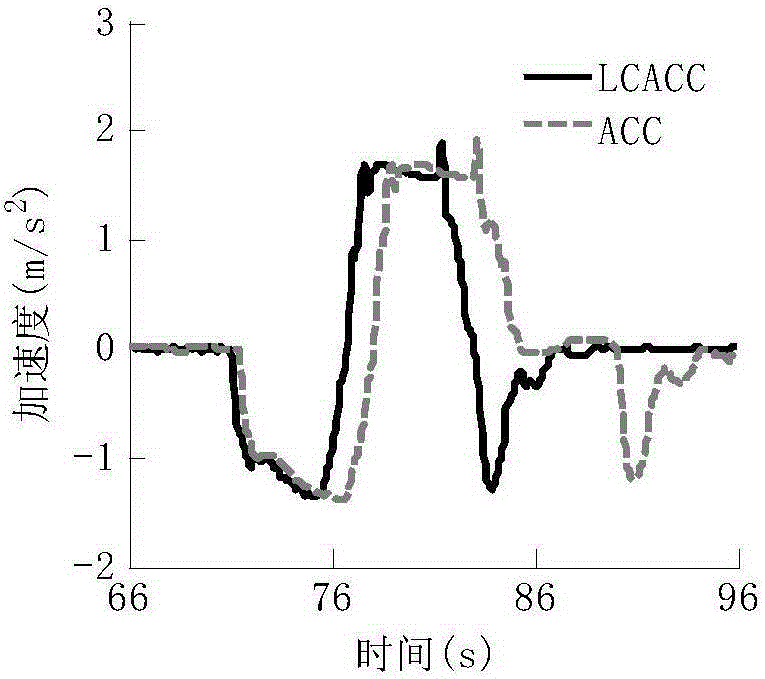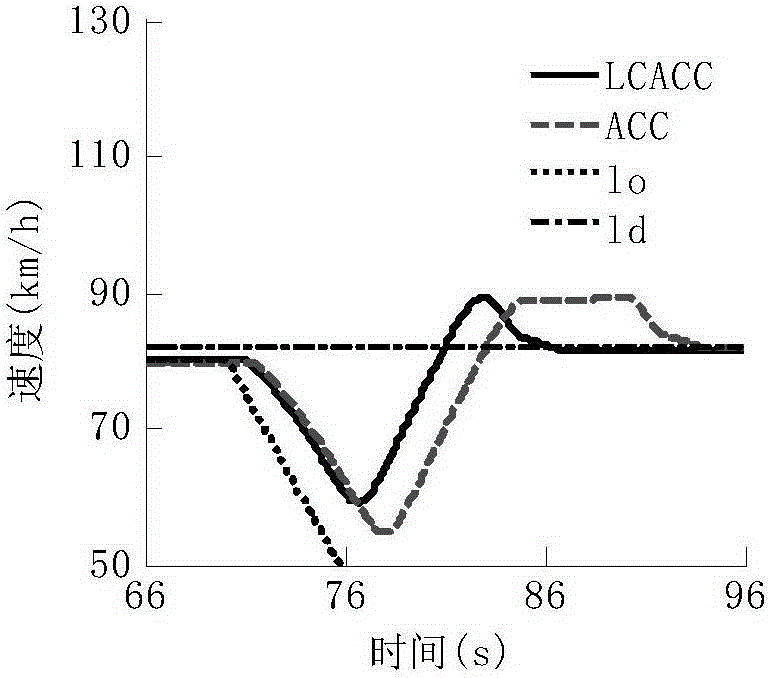A vehicle multi-objective coordinated lane change assist adaptive cruise control method
A technology of adaptive cruise and control methods, which is applied to control devices, vehicle components, input parameters of external conditions, etc., and can solve problems such as large differences in system structure and control algorithm, difficulty in ensuring lane-changing safety, and inability to identify lane-changing intentions.
- Summary
- Abstract
- Description
- Claims
- Application Information
AI Technical Summary
Problems solved by technology
Method used
Image
Examples
Embodiment Construction
[0052] The present invention will be described in detail below in conjunction with the accompanying drawings and embodiments.
[0053] Based on the Model Predictive Control (MPC, Model Predictive Control) theory, the present invention proposes a vehicle multi-objective coordinated lane change assist adaptive cruise control method ((LCACC, AdaptiveCruiseControlwithLaneChangeAssist), which uses the longitudinal dynamic model of the lane changing vehicle as the control Object, through the surrounding multi-vehicle information and the driver's expected car-following model, predict the state of the self-vehicle, the state of the surrounding multi-vehicles and the driver's expected car-following state in the future, and adjust the weight of the car following in combination with the state of the self-vehicle and the state of the surrounding multi-vehicles coefficient, establish a comprehensive performance index that takes into account tracking, safety and comfort, and use rolling time...
PUM
 Login to View More
Login to View More Abstract
Description
Claims
Application Information
 Login to View More
Login to View More - R&D
- Intellectual Property
- Life Sciences
- Materials
- Tech Scout
- Unparalleled Data Quality
- Higher Quality Content
- 60% Fewer Hallucinations
Browse by: Latest US Patents, China's latest patents, Technical Efficacy Thesaurus, Application Domain, Technology Topic, Popular Technical Reports.
© 2025 PatSnap. All rights reserved.Legal|Privacy policy|Modern Slavery Act Transparency Statement|Sitemap|About US| Contact US: help@patsnap.com



